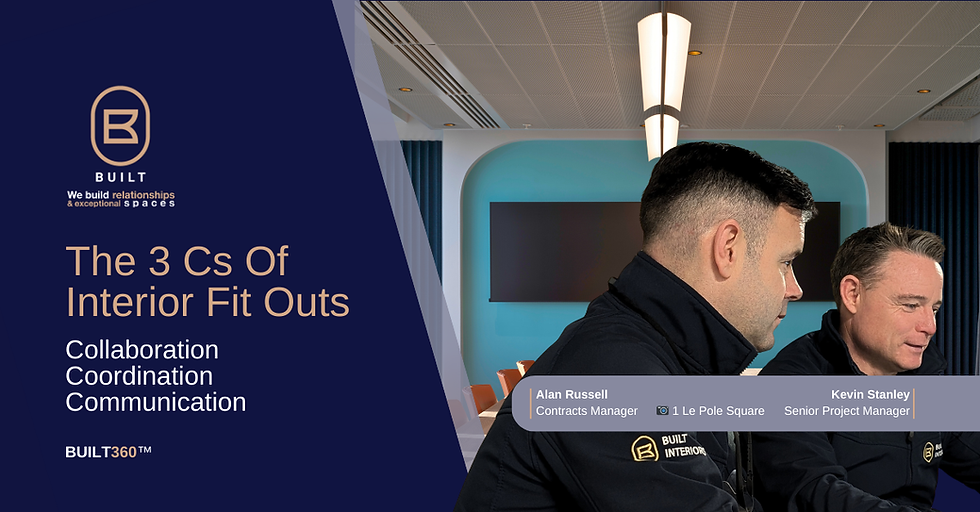Redefining the Office: 10 Benefits of Subdividing Large Floorplates and 10 Challenges You’ll Need to Solve
- declan191
- Jun 27
- 2 min read

The modern office is shrinking, not in ambition, but in footprint. Hybrid working, smaller teams, and a push for quality over quantity have created new demand for compact, collaboration-ready workspaces. For landlords holding oversized, underutilised office floors, this shift presents a real opportunity - if delivered correctly.
10 Benefits of Subdividing Large Office Spaces
Higher Yield per Square Metre: Smaller, flexible units often command higher rental rates proportionally than full-floor leases.
More Diverse Tenant Mix: Start-ups, embassies, consultancies, and SMEs all seek ready-to-go, right-sized spaces.
Reduced Void Risk: One vacancy in a multi-tenant building poses less financial risk than losing a single full-floor occupier.
Faster Lettings: Plug-and-play offices allow tenants to move in quicker, reducing downtime.
Future-Proofed Assets: Offices designed for hybrid work are more attractive in the long term.
Operational Flexibility: Landlords can reconfigure or re-let smaller spaces with more agility.
Improved Building Efficiency: Tailored M&E systems serve individual units more effectively.
Increased Capital Value: Higher occupancy rates and improved rent rolls enhance asset valuation.
Tenant Retention: Quality spaces that support modern working are more likely to retain occupants.
Stronger Market Positioning: Adapted properties stand out in a competitive commercial landscape.
10 Challenges You’ll Need to Overcome
Live Environment Constraints: Tenants still in place mean minimal noise, dust, or disruption.
Maintaining Operational Services: BMS, HVAC, and electrical must remain live during works.
Limited Access and Storage: Urban sites often lack skip space or delivery bays.
Precise Logistics Planning: Just-in-time delivery becomes essential when storage is off the table.
Complex Service Separation: M&E systems must be split without affecting active tenants.
Night and Weekend Works: Noisy activities must often be scheduled out of hours.
Tight Timelines: Programmes are short and highly coordinated.
Regulatory Compliance: Floorplate changes must meet current fire, access, and building regulations.
Sensitive Stakeholders: Diplomats, childcare providers, and retail-facing tenants all have unique needs.
Design Consistency: High-spec finishes and compliance must be maintained across every new tenancy.
The Donnybrook House case study shows this approach in action. Subdivision and technical upgrades were delivered in a live, fully tenanted building with no disruption to operations. Built managed the entire transition - from mechanical separation to bespoke tenant fit-outs, unlocking new income and long-term flexibility for the asset owner. Real challenges, real results, and a model that’s already being repeated.
If you’re managing an office building in Dublin and looking to reconfigure, relet or revitalise, get in touch with the team delivering these profitable transformations right now.







Comments